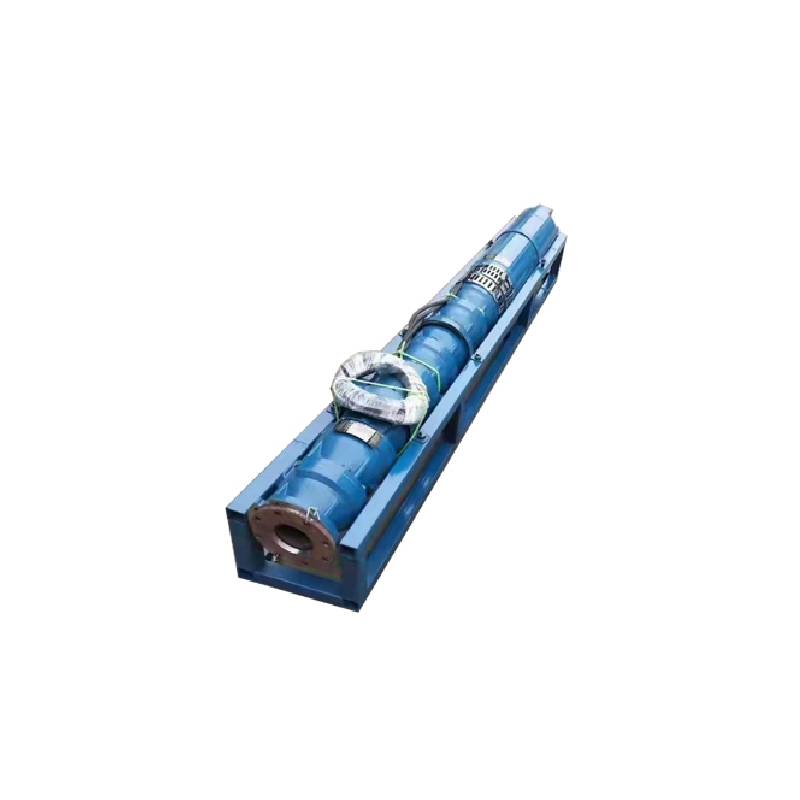Dec . 05, 2024 16:57 Back to list
Reliable and Efficient Submersible Pumps for Various Water Applications
Understanding Water Submersible Pumps Functionality, Applications, and Benefits
Water submersible pumps have become an essential tool for various industries and residential applications. These pumps are designed to operate while fully submerged in water, allowing for efficient and effective water relocation. This article explores the functionality, applications, and benefits of submersible pumps, emphasizing their significance in today’s water management systems.
Functionality of Submersible Pumps
Submersible pumps function by converting electrical energy into hydraulic energy. They are encased in a waterproof housing that protects the electrical components from water damage. Typically, these pumps contain a motor that is located above the pump impeller and is hermetically sealed to prevent water intrusion.
When activated, the motor drives the impeller, which pushes the water up through the pump and out to the designated discharge point. The design allows for fluid to flow through the pump easily due to the pump being immersed in the water source. This functionality enables submersible pumps to handle a variety of fluids, including clean water, wastewater, and even hazardous materials in specialized applications.
Applications of Submersible Pumps
The versatility of submersible pumps makes them suitable for numerous applications across different sectors
1. Residential Use In homes, submersible pumps are commonly used for draining basements, emptying pools, and managing groundwater levels in basements. They effectively handle flooding situations and provide a reliable solution for water removal. 2. Agriculture Farmers utilize submersible pumps for irrigation purposes. By extracting water from wells or nearby bodies of water, these pumps ensure crops receive the necessary hydration, improving crop yields and optimizing resource usage.
3. Construction In construction sites, submersible pumps are employed to remove water from excavations and foundations. Their ability to operate under harsh conditions makes them invaluable for dewatering projects, thus maintaining safe work environments.
4. Sewage Management Submersible sewage pumps are specifically designed to move wastewater and sewage efficiently. These pumps manage effluent discharge in treatment facilities and are utilized in municipal networks to prevent clogs in sewage systems.
water submersible pumps

5. Swimming Pools and Aquariums Many homeowners and businesses use submersible pumps to manage water levels in swimming pools and aquariums, ensuring cleanliness and proper circulation.
Benefits of Submersible Pumps
Submersible pumps offer several benefits that contribute to their widespread use
- Efficiency Being submerged in water allows these pumps to work under high pressure with less energy consumption compared to surface pumps. This efficiency leads to lower operational costs over time.
- Space-saving Design The compact design of submersible pumps allows for installation in confined spaces, making them ideal for applications where vertical and horizontal space is limited.
- Reduced Noise Levels Operating under water dampens the sound produced by the pump, resulting in quieter performance compared to traditional pumps, which makes them suitable for residential areas.
- Minimal Maintenance Submersible pumps have fewer moving parts exposed to the environment, reducing wear and tear. This leads to lower maintenance requirements and extends the lifespan of the equipment.
- Adaptability Submersible pumps can handle a wide range of applications and fluid types, making them incredibly versatile tools in various sectors.
Conclusion
Water submersible pumps play a crucial role in managing water resources effectively in both residential and industrial applications. Their efficient operation, versatility, and maintenance-friendly features make them an indispensable component in modern water management systems. As the needs for effective water extraction and management grow, submersible pumps will remain fundamental to ensuring a sustainable future, showcasing their importance across diverse fields. Whether in addressing flooding issues, supporting agriculture, or managing wastewater, these pumps provide solutions that are both innovative and reliable.
-
Submersible Water Pump: The Efficient 'Power Pioneer' of the Underwater World
NewsJul.01,2025
-
Submersible Pond Pump: The Hidden Guardian of Water Landscape Ecology
NewsJul.01,2025
-
Stainless Well Pump: A Reliable and Durable Pumping Main Force
NewsJul.01,2025
-
Stainless Steel Submersible Pump: An Efficient and Versatile Tool for Underwater Operations
NewsJul.01,2025
-
Deep Well Submersible Pump: An Efficient 'Sucker' of Groundwater Sources
NewsJul.01,2025
-
Deep Water Well Pump: An Efficient 'Sucker' of Groundwater Sources
NewsJul.01,2025
-
 Submersible Water Pump: The Efficient 'Power Pioneer' of the Underwater WorldIn the field of hydraulic equipment, the Submersible Water Pump has become the core equipment for underwater operations and water resource transportation due to its unique design and excellent performance.Detail
Submersible Water Pump: The Efficient 'Power Pioneer' of the Underwater WorldIn the field of hydraulic equipment, the Submersible Water Pump has become the core equipment for underwater operations and water resource transportation due to its unique design and excellent performance.Detail -
 Submersible Pond Pump: The Hidden Guardian of Water Landscape EcologyIn courtyard landscapes, ecological ponds, and even small-scale water conservancy projects, there is a silent yet indispensable equipment - the Submersible Pond Pump.Detail
Submersible Pond Pump: The Hidden Guardian of Water Landscape EcologyIn courtyard landscapes, ecological ponds, and even small-scale water conservancy projects, there is a silent yet indispensable equipment - the Submersible Pond Pump.Detail -
 Stainless Well Pump: A Reliable and Durable Pumping Main ForceIn the field of water resource transportation, Stainless Well Pump has become the core equipment for various pumping scenarios with its excellent performance and reliable quality.Detail
Stainless Well Pump: A Reliable and Durable Pumping Main ForceIn the field of water resource transportation, Stainless Well Pump has become the core equipment for various pumping scenarios with its excellent performance and reliable quality.Detail
